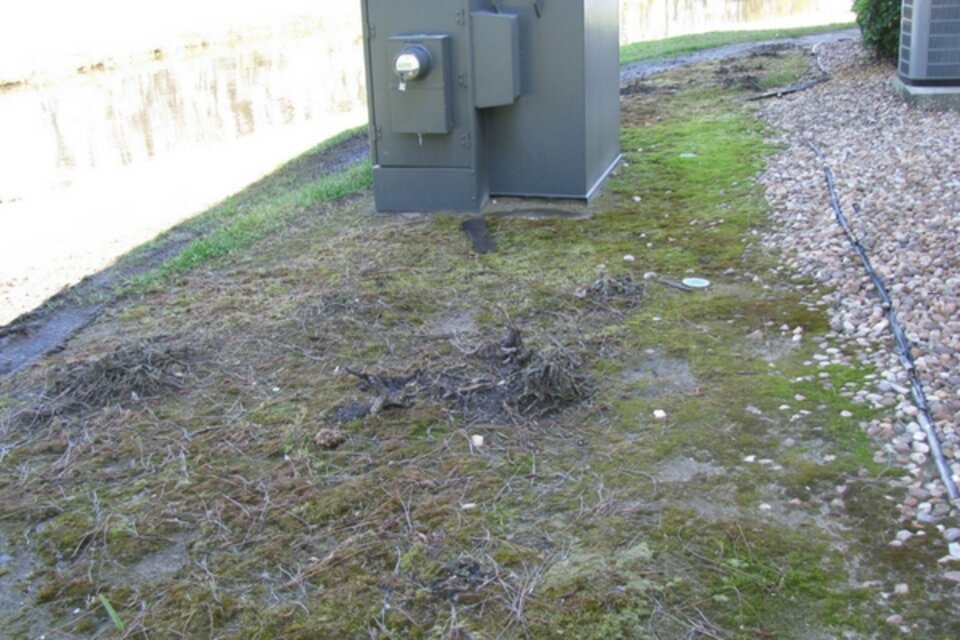Moss in Lawns and Landscapes

In your lawn is overly shaded and/or has poor drainage, moss may be a problem. Moss is a fast growing, shallow rooted plant that covers the ground, smothers grass and exhausts food reserves from the soil.
When moss appears in a lawn, it is usually because growing conditions for turfgrasses and landscape plants are adverse, usually too little light and air circulation. Other conditions favorable for moss invasion include soil with poor aeration and percolation, compaction, low fertility and high acidity or alkalinity.
In order to control moss permanently, the conditions that allow its growth must be eliminated.
Because shade is a major cause of moss growth, removal of excess or damaged growth on overhanging shade trees might be an option. Removal of fences or other structures is another consideration. Because drainage is an important influence, improving the soil drainage by filling depressions, redirecting downspouts and installing tile are possible solutions.
Slicing and core cultivation will improve aeration and compaction of a lawn. Mechanical devices such as aerifiers, core cultivators and vertical mowers can be rented at local rental stores.
Testing the soil to determine the pH will help gain insight into its alkalinity or acidity. If the results indicate that the pH is not conducive to healthy growth of turfgrass, ground covers or other landscape plants, incorporate sulfur or lime according to test result recommendations.
Moss can be temporarily removed by raking, which may be necessary every few weeks or so, especially if conditions for healthy turf and landscape plant growth are not able to be resolved. Another option is to control the moss itself with an application of ferrous sulfate according to label directions. Products containing ferrous sulfate are often labeled “lawn moss control” or similar language and available from local garden centers. After application, the moss can be raked out and bare areas reseeded.
In addition to removal from lawns, replacing turfgrass with ornamental plants that tolerate shade is a good option, especially groundcovers such as lily of the valley, bishop’s goutweed, Japanese spurge, lamium and lady’s mantle. Each of these will thrive in the shade and compete well with the moss, unlike turfgrass.
David Robson, University of Illinois Extension Educator contributed to this article.
This article was reviewed by Scott Evans